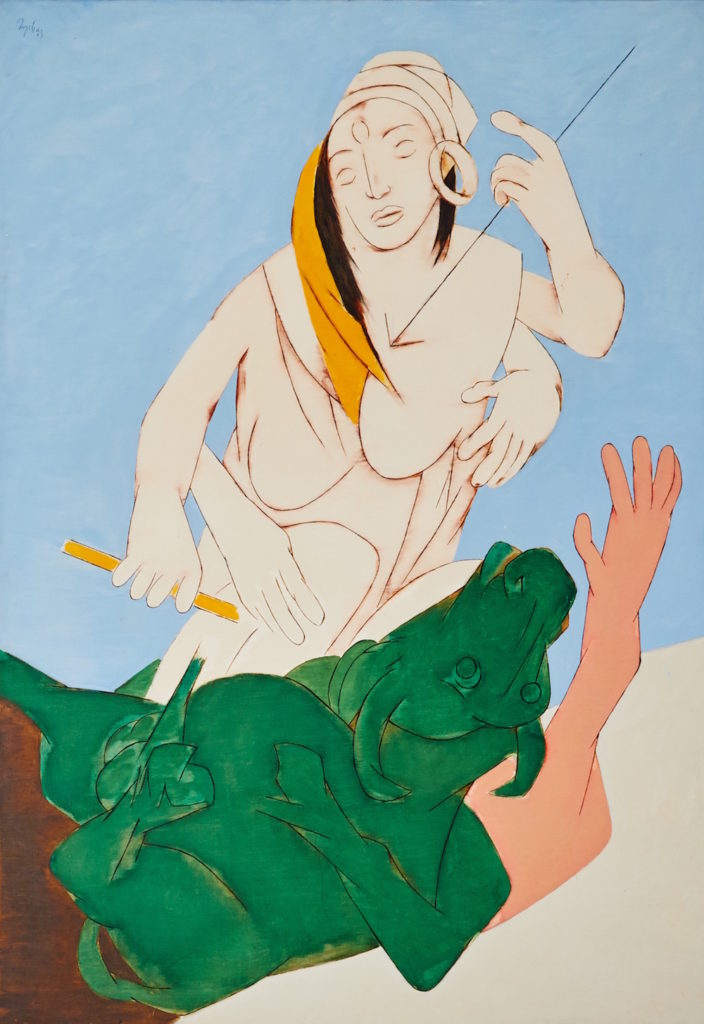Auctions
Sotheby’s Will Begin Holding Auctions in India to Capitalize on the Country’s Growing Art Market
The first live auction will be held in Mumbai in December.

The first live auction will be held in Mumbai in December.

Eileen Kinsella

In yet another sign that the Indian art market is on the rise, Sotheby’s announced today that it will begin holding live auctions in Mumbai later this year. The move is a response to growing demand from Indian collectors and the country’s expanding art scene, according to the auction house. Sotheby’s established an office in Mumbai in 2016 and will hold the sale at Taj Mahal Palace Hotel in December.
The publicly traded company has ventured into the region before. It held a lone sale in Mumbai in 1992, but ultimately decided the market was not robust enough to support regular auctions. Meanwhile, rival Christie’s began holding live sales in Mumbai in late 2013, but canceled them last year. (A Christie’s representative did not immediately respond to a request for comment about the auction house’s future plans.)
“It’s the right time for Sotheby’s to further expand the services we offer our clients in the region,” managing director Jan Prasens said in a statement. He emphasized the importance of bringing auctions “directly to the doorstep of the many collectors who live there.”
While the market for Modern Indian masters—including artists like Tyeb Mehta and Francis Newton Souza—has been robust for at least a decade, their work has usually been sold in New York during Asia Week or in London as part of Modern and contemporary Southeast Asian art auctions.
Gaurav Bhatia, another managing director at the house, told Quartz that Indian clients have spent “in excess of $250 million in our auctions.”
India’s market in the past has heated up in the past—but then flamed out. Not long before the global financial crisis struck a decade ago, India was heralded as one of the so-called “BRIC” countries (Brazil, Russia, India, China) that would likely develop into new market hubs. But collectors retreated amid the stock market crash.
Now, some say there are signs that the market is more sustainable. Since 2009, India has seen the launch of the Kochi-Muziris and Pune biennials and the Serendipity Arts Festival in Goa. Furthermore, the country’s economy is expected to grow more quickly than China’s in the next year, according to recent forecasts.
Sotheby’s December sale, titled “Boundless: Mumbai,” will include major works by South Asian artists as well as art by Western artists who have been influenced by the culture and geography of South Asia. Among the highlights is Tyeb Mehta’s painting Durga Mahisasura Mardini (1983), a commission that has remained in the same private collection since it was made. It is estimated to sell in the region of $3 million.
Mehta’s current auction record, $3.6 million, was set at Christie’s in London this past May. Notably, two of the three highest auction prices for Mehta were established within the past year. Last month, Mehta’s third highest price was set at the Indian auction house AstaGuru, when Bull (2000) sold for $3.2 million.
Edward Gibbs, Sotheby’s chairman of India and the Middle East, noted that Sotheby’s has seen “exponential growth” in Indian collectors’ activity at Sotheby’s in both sales of South Asian art and international sales. “This strong uptick is part of a global pattern of increased liquidity within the market but it is also reflective of the flourishing arts scene on the ground in India itself,” Gibbs said in a statement.